Recent Articles
Popular Makes
Body Types
2018 Hyundai Tucson Road Test and Review
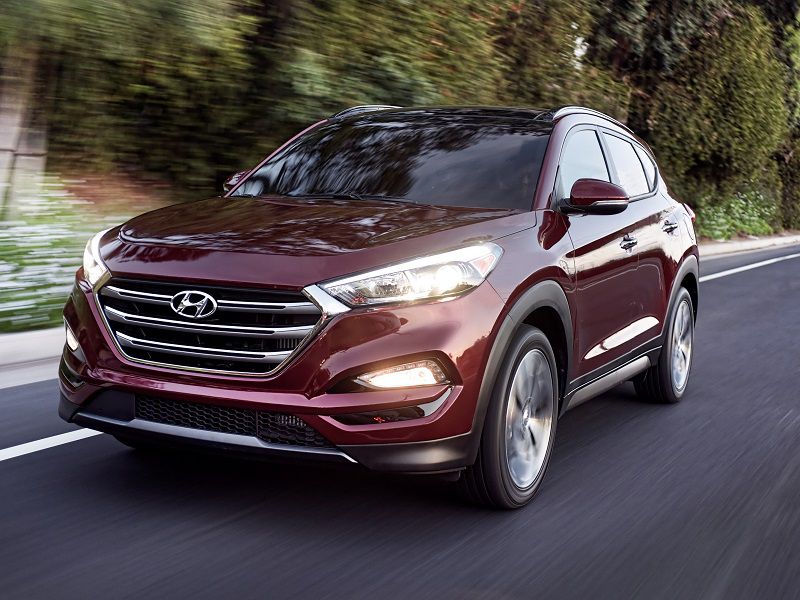
2018 Hyundai Tucson Burgundy Driving Front Quarter ・ Photo by Hyundai
The Hyundai Tucson compact SUV isn’t flashy. It doesn’t feature in-your-face exterior styling. It doesn’t have a funky interior that screams “I’m different.” It won’t blow you away with its amazing performance potential. But the Tucson has matured into one of the highest-quality, best-value options in one of the most hotly competitive segments in the American market.
The Tucson was named Best Small SUV in the most recent J.D. Power Vehicle Dependability Study, which looked at 2015-model-year vehicles. More to the point, the 2018 Tucson topped its category in the most recent J.D.Power Initial Quality Study. For 2018, the third year of its current generation, the Tucson’s changes are relatively slight. But big changes weren’t needed, because the compact SUV has always provided good value.
Handling That'll Feel Familiar
crossovers are based on car chassis rather than those of trucks. Because of that, the Tucson, very much a crossover, handles like a slightly tall compact car. And most of the time that’s a very good thing. It’s cool to look like you might do some off-roading, but the fact is you’re going to be driving on pavement nearly 100 percent of the time. If you had a mind to, you could do some mild-to-moderate off-road driving in an all-wheel-drive-equipped Tucson. But do you really want to?
Whether you want to or not, the Tucson is a very pleasant transportation appliance that gets you where you want to go comfortably, economically, and reliably. When powered by the 2.0-liter four-cylinder base engine, the Tucson provides good-enough acceleration and praiseworthy ride comfort. The available 1.6-liter turbocharged engine dials it up a notch, but not a very big notch. If you want more power than that, the mechanically related but more powerful Kia Sportage SX might be the ticket.
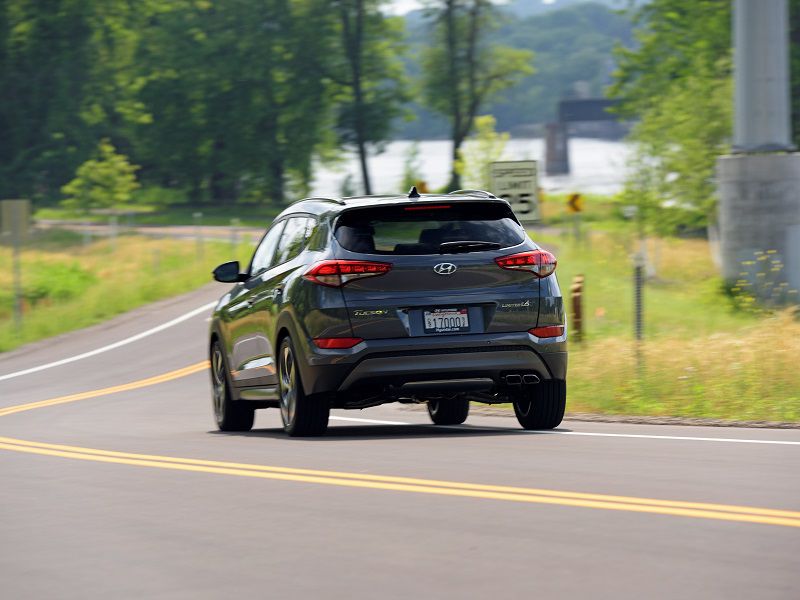
Photo by Hyundai
Razor-Sharp Interior
A well-known razor slogan promises a “clean, close, comfortable shave.” Well, that description fits the Hyundai Tucson’s interior. It is “clean” in that it has no irritating frills and is ergonomically simple. It is “close” in that it’s a reasonably small vehicle with room for four adults or maybe five if they’re comfortable with being close. And it’s “comfortable,” because... well, because it just is. The seats are comfortable, the ride is comfortable, and even the moderate accelerative abilities are comfortable.
You won’t take the Tucson for a lap of the Nurburgring, but that’s not why you’d buy it. You’re more likely to buy it because you can get one with heated front and rear seats. Or because you want a panoramic sunroof. Or because dual-zone automatic temperature control is offered on the top three trims. Hey, most of us like “comfort food.”
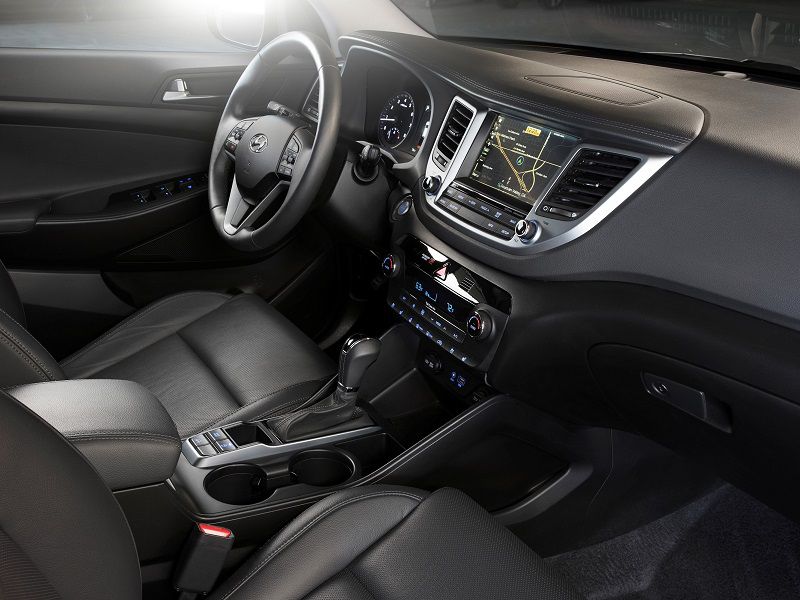
Photo by Hyundai
Sophisticated Infotainment Systems
One could make the case that the top-level infotainment system available in the Tucson is more sophisticated and powerful than the vehicle in which it rides. But having a great sound system is important to a lot of people. So Hyundai offers an 8-inch touchscreen unit that combines dedicated navigation with an Infinity audio system. With 315 watts of power, it uses an external amplifier, and it includes eight speakers.
The base audio system is more modest — a 5-inch color touchscreen controlling an AM/FM/CD/MP3 audio system with six speakers. That base system doesn’t support Apple CarPlay and Android Auto, but the mid-range system (a 7-inch color touchscreen) and the previously described top-of-the-line systems do. The 7-inch system is standard on the SEL and Value trims. The 8-inch system is standard on the SEL Plus and Limited.
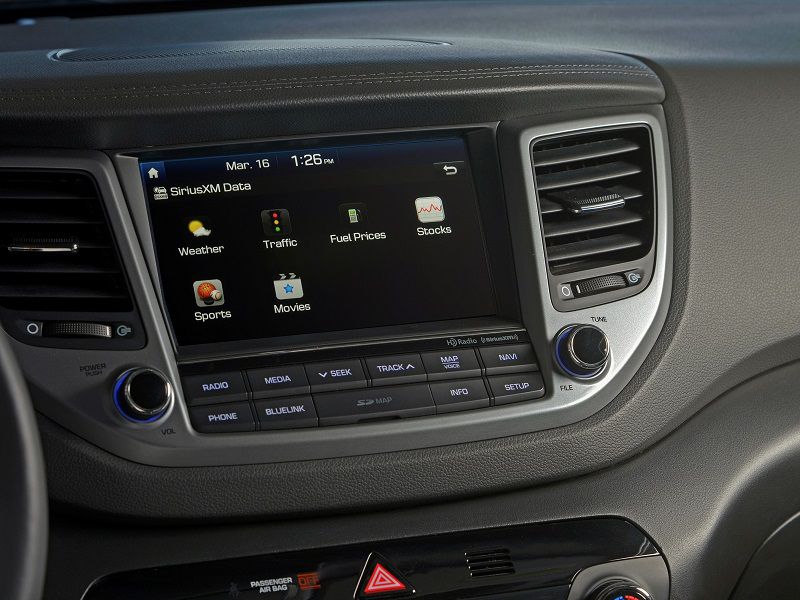
Photo by Hyundai
Conservatively Tailored Exterior
On the outside the Tucson offers neither flash nor trash. You might say the design is mild-mannered in the tradition of Clark Kent. While some brands strive for leading-edge exterior styling in this segment — the Ford Escape and Kia Sportage prominent among them — the Hyundai stylists have rendered a small SUV that looks a lot like a big SUV, only smaller. Take the Hyundai “H” out of the grille, and the Tucson could be any brand’s small SUV. For many consumers, that’s a big advantage.
What isn’t big is its overall size. At 176.2 inches long, it is among the most compact of the compact SUVs. But that size can be a plus in crowded urban streets. Handy roof rails are standard on all but the lowest trim, and a panoramic sunroof is standard on the Value trim and optional on the Limited.
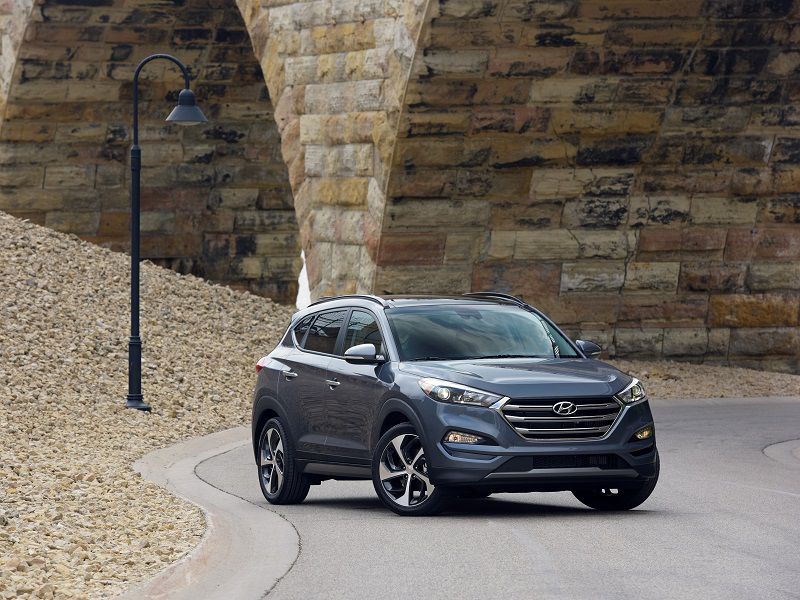
Photo by Hyundai
Choice of Two Engines
The Tucson offers a pair of powertrain choices for 2018. The base engine is a 2.0-liter, direct-injected four-cylinder delivering 164 horsepower and 151 pound-feet of torque. It’s coupled to a six-speed automatic transmission with a manual shifting mode and an overdrive lock-up torque converter for higher fuel economy at highway speeds. The 2.0-liter four is standard on the SE, SEL, and SEL Plus trims.
The other engine choice is a 1.6-liter direct-injected turbocharged four-cylinder offering 175 horsepower and a meaty 195 pound-feet of torque. The turbo engine is coupled to a seven-speed dual-clutch transmission that offers clutch-free manual shifts or automatic operation. Fuel economy for the front-wheel drive 2.0-liter is 23 mpg in the city, 30 mpg on the highway, and 26 mpg combined. For the front-drive 1.6-liter turbo, it improves to 25 mpg city/30 mpg highway/27 mpg combined. All-wheel drive drops fuel economy about 2 mpg.
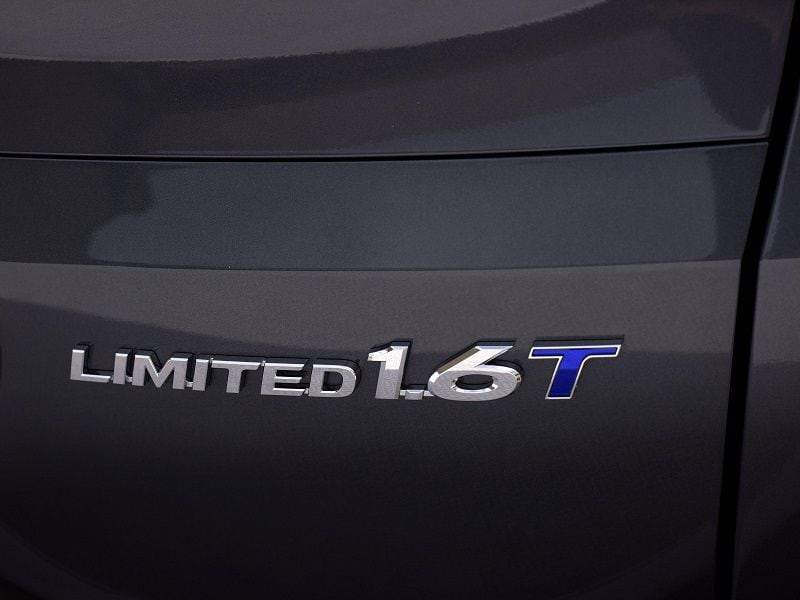
Photo by Hyundai
The handy size limits cargo capacity.
The Tucson puts a premium on interior comfort. It is not designed to carry five people and a lot of stuff. It is better suited to four people and a reasonable load of stuff, or two people and a lot of stuff. Passenger room for four — or five in a pinch — is good, but its cargo area is among the smallest in the segment.
With the rear seat folded, the Tucson offers 61.9 cubic feet of cargo volume, compared to the Honda CR-V’s 76 cubic feet. With the second-row bench seat in use, the Hyundai provides 31 cubic feet of cargo space, smaller than the competing Honda by eight cubic feet. Tucsons equipped with roof rails can also accept a variety of carriers that offer added carrying space. With either available engine, the Tucson offers a modest 1,500-pound towing capacity.
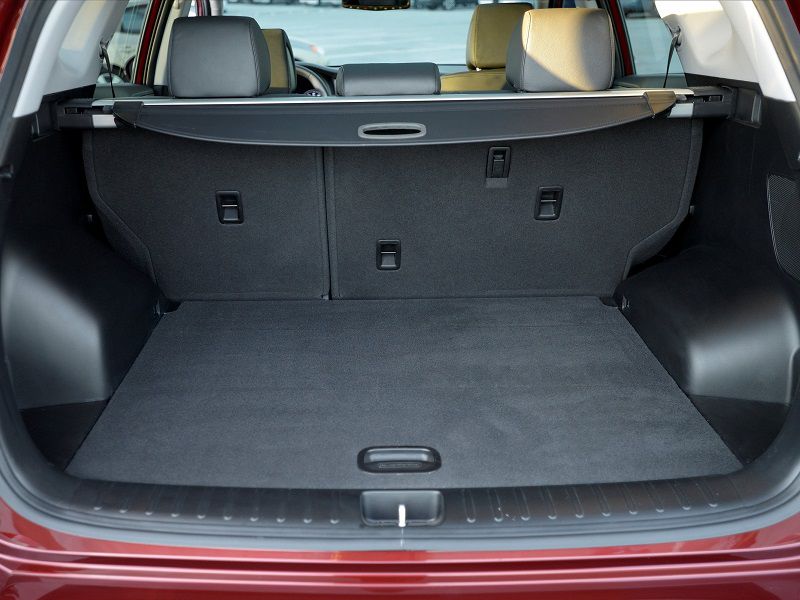
Photo by Hyundai
More safety items are available on higher trims.
All Tucson models can be equipped with a number of safety features, but the safety option list grows more extensive as you climb the trim-level ladder. Included among the available advanced safety features are blind-spot monitoring with a rear cross-traffic alert and lane-change assist, and automatic emergency braking with pedestrian detection.
Automatic emergency braking is optional only on the Limited trim level. Blind-spot monitoring, the rear cross-traffic alert, and a lane departure warning are standard on SEL Plus, Value, and Limited models. Vehicle stability management, electronic stability control, downhill brake control, hill-start assist control, and traction control are standard across every Tucson. Active, on-demand all-wheel drive is optional on every trim.
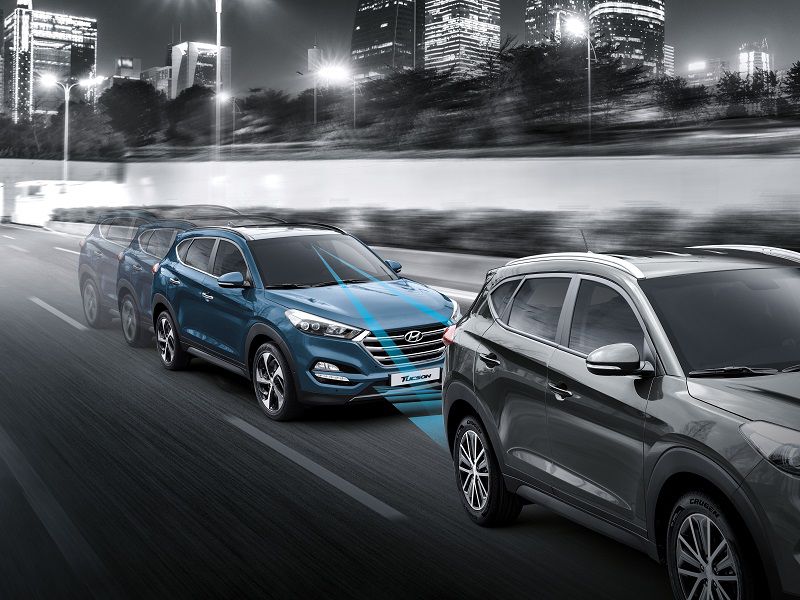
Photo by Hyundai
Trim Levels to Suit Various Tastes
The 2018 Hyundai Tucson is available in five trim levels — SE, SEL, SEL Plus, Value, and Limited. In the Hyundai tradition, even the base SE version has several valuable standard features, among them power windows and door locks, six-way adjustable driver’s seat, rear-seat heater ducts, and alloy wheels.
For those seeking a wide variety of luxury and convenience features, the Value trim is, well, a good value. It offers niceties like an eight-way power-adjustable driver’s seat and a 7-inch infotainment display. The most expensive trim, Limited, packs in a slew of luxury and safety items as standard equipment. Its vast list of standard items includes the heated leather seats and an 8-inch infotainment system with Infinity eight-speaker audio and integrated navigation. A panoramic sunroof and heated rear seats are optional on the Limited.
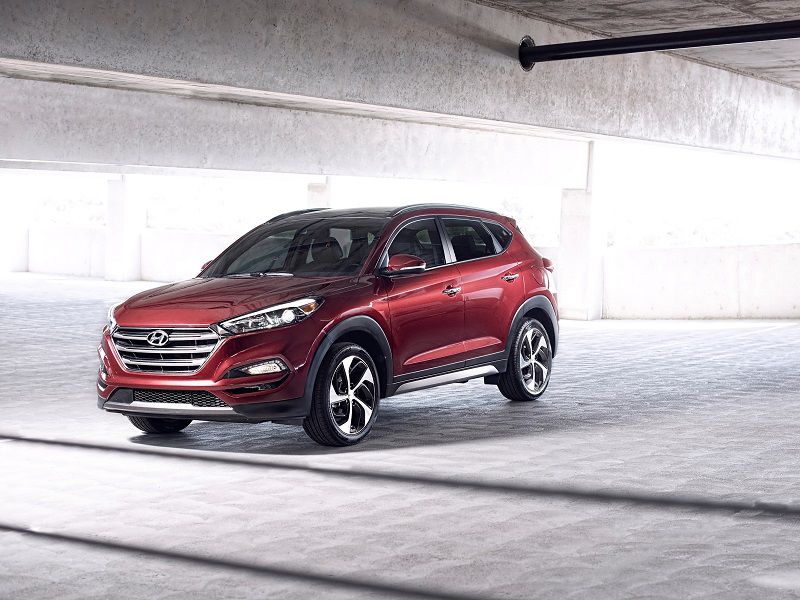
Photo by Hyundai
Pricing Offers Good Value
One of the reasons for the Tucson’s popularity is its value story. The price-leader is the SE trim level with an MSRP of $22,550 plus $980 freight for the front-wheel drive model. The SEL starts at $23,800, the SEL Plus at $26,700, the Value at $26,550, and the Limited starts $29,425. All-wheel drive adds $1,400 to the price at each level.
In terms of cost-to-own and safety aids, the Tucson is mid-pack in its class. But as we said, its quality and satisfaction ratings are significantly above average. While the Honda CR-V is a perennial favorite and the Toyota RAV4 has upped its game lately, there is a lot to like about the Hyundai Tucson. It has one of the best warranties in the industry, and it could be a great choice for you.
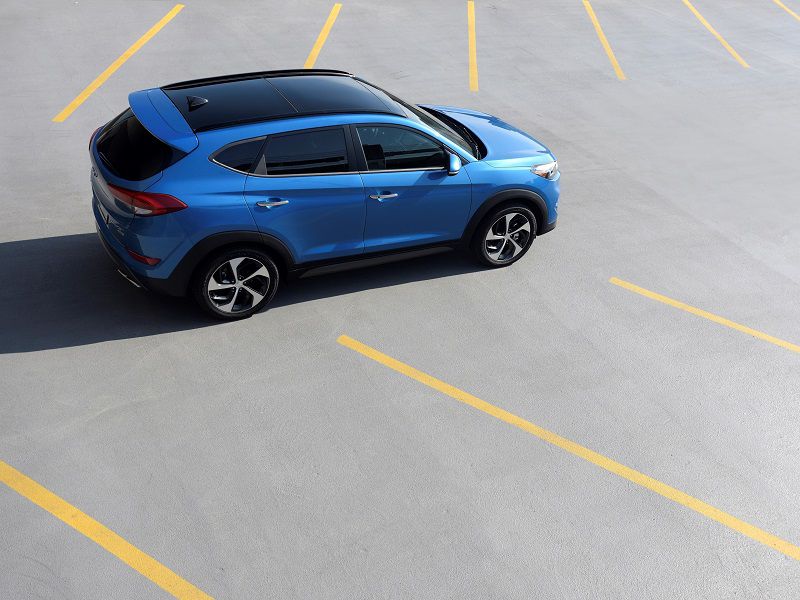
Photo by Hyundai